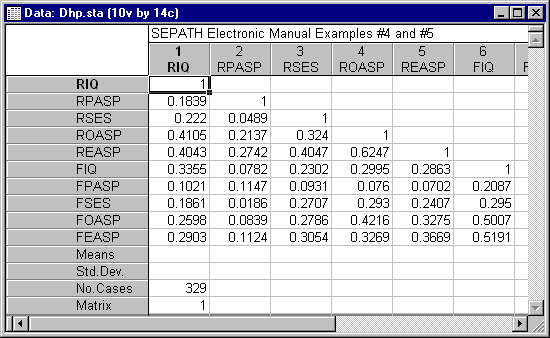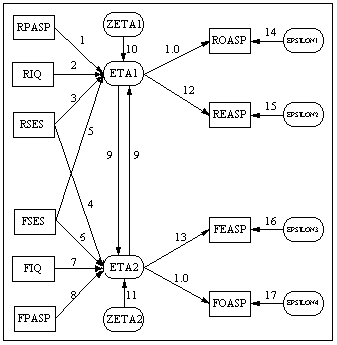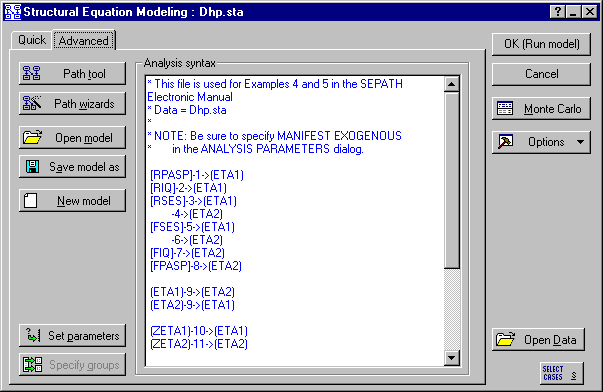Example 4: Effect of Peer Influence on Ambition
Duncan, Haller, and Portes (1968) analyzed the effect of peer influences on ambition. The correlation matrix from their study, based on 329 subjects, is in the Dhp.sta data file. A portion of that file is shown below.

Their data have been analyzed in a number of publications, and the substantive content of the example will not be discussed here. Jöreskog and Sörbom (1984) present the results from several path models on these data. Here we analyze the model the results for which are given in Table III.12 of Jöreskog and Sörbom.
The path diagram is shown below.

Corresponding PATH1 statements for the model are in the Dhpa.cmd file.

We begin by analyzing the model the way it was analyzed in Jöreskog and Sörbom (1984). Several comments are in order. First, note from the path diagram that the model has manifest exogenous variables. In the file Dhpa.cmd, you are reminded to select the Fixed option button under Manifest exogenous in the Analysis Parameters dialog with this model. The command is used because of the existence in the model of a number of manifest exogenous variables (located on the left side of the diagram). We have taken the convenient option here and not specified any of the variance-covariance relationships for these variables. If you fail to activate the Manifest exogenous Fixed option in the Analysis Parameters dialog, STATISTICA will give an error message and abort the analysis, unless you add paths for all of the variance-covariance relationships among these variables.
Second, note that some paths are constrained to have fixed coefficients of 1.0. It is a relatively common technique in structural modeling to fix one path coefficient from each endogenous latent variable in order to identify the variance of the latent variable at some fixed value. In this case, we see two path coefficients were fixed by Jöreskog and Sörbom (1984), ostensibly in order to identify the variances of the latent endogenous variables ETA1 and ETA2.
